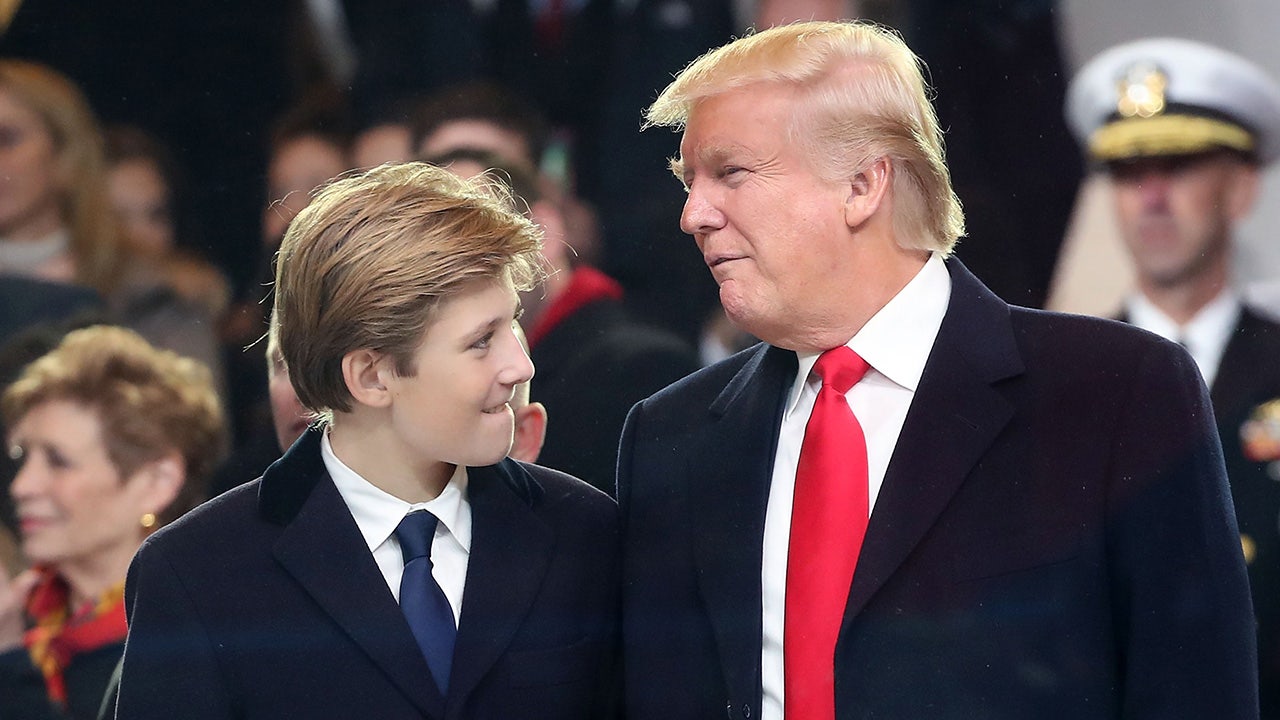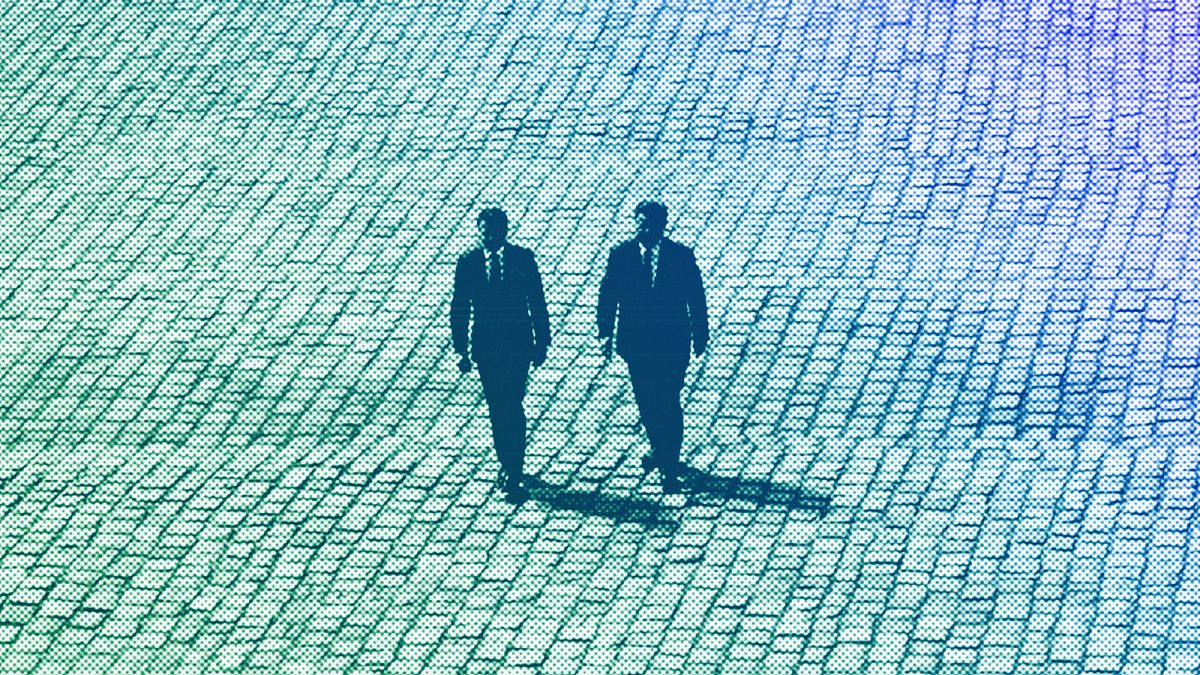Education
What Bills Did DeSantis Sign as He Propelled Florida to the Right?

Seeking to elevate his stock with his Republican base for his presumptive presidential candidacy, Gov. Ron DeSantis of Florida this year has checked off many boxes on a far-right wish list of laws restricting abortion rights, gender-transition care for minors and teaching about sexual orientation.
Expanding capital punishment and who can carry a concealed firearm in his state? Check. Targeting Disney? Check.
And he could soon remove a requirement that he resign as governor to run for president.
The frenzy of bill-signings and a culture-war agenda laid the groundwork for the candidacy of Mr. DeSantis, who is seeking to position himself as a viable alternative to former President Donald J. Trump, the G.O.P.’s front-runner and a onetime ally.
Here are the bills Mr. DeSantis has signed this year:
Six-week abortion ban
In April, Mr. DeSantis signed a law that bans abortions after six weeks of pregnancy, making Florida one of the nation’s most restrictive states for reproductive rights. As a result, the state will no longer be a destination for women from across the Deep South seeking abortions.
Emboldened by last year’s Supreme Court decision overturning Roe v. Wade, Republicans used their supermajorities in Florida’s Legislature to advance the measure. It replaced a 15-week abortion ban that Mr. DeSantis had signed in April 2022, before the nation’s high court abandoned 50 years of legal precedent on abortion.
But unlike the earlier ban, which Mr. DeSantis promoted with a bill-signing at a church, he ushered in the six-week ban in his office late at night without public notice, except for a group of supporters who joined him.
The law includes exceptions for rape, incest and to save the life of a mother. It won’t take effect until Florida’s Supreme Court decides a challenge of the 15-week restriction.
Banning transition-care for minors
In mid-May as he was finalizing his candidacy for president, Mr. DeSantis signed a measure outlawing gender-transition care for minors and restricting it for adults, the latest action by Republicans this year aimed at L.G.B.T.Q. communities in Florida.
It imposed a penalty of up to five years in prison for doctors who violate the ban and requires adults seeking gender-transition care to sign a consent form.
The teaching of “identity politics,” long a preoccupation of right-wing Republicans, is prohibited at public institutions under the law, which also weakened tenure protections.
In March, Mr. DeSantis gave conservatives another trophy, creating a universal school voucher program. Critics said that the $8,000-per-year benefit per student would undermine public schools and further enrich wealthy families because it does not have an income eligibility cap.
Death penalty
Abortion was not the only issue that Florida took a sharp right turn on this year: Capital punishment was another.
In April, Mr. DeSantis signed a bill that will substantially lower the threshold for imposing the death penalty. It will no longer require a unanimous vote by 12 members of a jury to sentence a person to die. An 8-to-4 majority would be enough under the new law, which is expected to face legal challenges from criminal justice reform groups.
The vast majority of the 27 states that allow the death penalty require unanimous sentencing votes by juries. Alabama is one of the exceptions: a 10-to-2 majority suffices. In cases of deadlocked juries, judges get to decide in Indiana and Missouri.
In Florida, Republicans pushed for the death penalty expansion after a jury last year handed down a life sentence to the man who murdered 17 people in the 2018 mass shooting at Marjory Stoneman Douglas High School in Parkland, Fla. Nine of the jury’s 12 members voted for the death penalty.
Concealed carry
Around the same time that a super PAC supporting Mr. DeSantis labeled Mr. Trump as a “gun grabber,” the governor signed a law in April that allows Floridians to carry concealed weapons without a permit.
As of July 1, gun owners will no longer be required to pass a safety course and a background check, a shift away from calls for tougher gun laws in the state after mass shootings in 2018 in Parkland and in 2016 at the Pulse nightclub in Orlando.
Mr. DeSantis and his allies have sought to cast Mr. Trump as squishy on the Second Amendment, with the super PAC suggesting that the former president “cut and run like a coward” on gun rights issues when he was in the White House.
Disney oversight and immigration
In an escalation of the hostilities between Mr. DeSantis and Disney, which Republicans have turned into an avatar of “woke” culture, the governor signed a series of bills targeting the company and its autonomy over a special taxing district that is home to Disney World.
The measure, which Republicans and the Florida Department of Law Enforcement claimed was needed for security reasons, will create a veil of secrecy over who is paying for the travel of Mr. DeSantis and how he is dividing his time as governor and a presidential candidate.
Even Mr. Trump has latched onto the issue, saying in a statement from his campaign in April that Mr. DeSantis was not being transparent about how much taxpayer money he was spending on travel.
Still, there is another bill awaiting Mr. DeSantis’s signature that is intertwined with his political ambitions. It would immediately eliminate a requirement that he resign as governor to run for president. He might not even need a pen: It will automatically take effect if unsigned.
Reporting was contributed by Nicholas Nehamas, Patricia Mazzei, Trip Gabriel, Nick Corasaniti and Brooks Barnes.

Education
Video: Police Use Pepper Spray on Protesters on G.W.U.’s Campus

new video loaded: Police Use Pepper Spray on Protesters on G.W.U.’s Campus
transcript
transcript
Police Use Pepper Spray on Protesters on G.W.U.’s Campus
Police officers arrested 33 pro-Palestinian protesters and cleared a tent encampment on the campus of George Washingon University.
-
“The Metropolitan Police Department. If you are currently on George Washington University property, you are in violation of D.C. Code 22-3302, unlawful entry on property.” “Back up, dude, back up. You’re going to get locked up tonight — back up.” “Free, free Palestine.” “What the [expletive] are you doing?” [expletives] “I can’t stop — [expletives].”
Recent episodes in Israel-Hamas War
Education
How Counterprotesters at U.C.L.A. Provoked Violence, Unchecked for Hours

A satellite image of the UCLA campus.
On Tuesday night, violence erupted at an encampment that pro-Palestinian protesters had set up on April 25.
The image is annotated to show the extent of the pro-Palestinian encampment, which takes up the width of the plaza between Powell Library and Royce Hall.
The clashes began after counterprotesters tried to dismantle the encampment’s barricade. Pro-Palestinian protesters rushed to rebuild it, and violence ensued.
Arrows denote pro-Israeli counterprotesters moving towards the barricade at the edge of the encampment. Arrows show pro-Palestinian counterprotesters moving up against the same barricade.
Police arrived hours later, but they did not intervene immediately.
An arrow denotes police arriving from the same direction as the counterprotesters and moving towards the barricade.
A New York Times examination of more than 100 videos from clashes at the University of California, Los Angeles, found that violence ebbed and flowed for nearly five hours, mostly with little or no police intervention. The violence had been instigated by dozens of people who are seen in videos counterprotesting the encampment.
The videos showed counterprotesters attacking students in the pro-Palestinian encampment for several hours, including beating them with sticks, using chemical sprays and launching fireworks as weapons. As of Friday, no arrests had been made in connection with the attack.
To build a timeline of the events that night, The Times analyzed two livestreams, along with social media videos captured by journalists and witnesses.
The melee began when a group of counterprotesters started tearing away metal barriers that had been in place to cordon off pro-Palestinian protesters. Hours earlier, U.C.L.A. officials had declared the encampment illegal.
Security personnel hired by the university are seen in yellow vests standing to the side throughout the incident. A university spokesperson declined to comment on the security staff’s response.
Mel Buer/The Real News Network
It is not clear how the counterprotest was organized or what allegiances people committing the violence had. The videos show many of the counterprotesters were wearing pro-Israel slogans on their clothing. Some counterprotesters blared music, including Israel’s national anthem, a Hebrew children’s song and “Harbu Darbu,” an Israeli song about the Israel Defense Forces’ campaign in Gaza.
As counterprotesters tossed away metal barricades, one of them was seen trying to strike a person near the encampment, and another threw a piece of wood into it — some of the first signs of violence.
Attacks on the encampment continued for nearly three hours before police arrived.
Counterprotesters shot fireworks toward the encampment at least six times, according to videos analyzed by The Times. One of them went off inside, causing protesters to scream. Another exploded at the edge of the encampment. One was thrown in the direction of a group of protesters who were carrying an injured person out of the encampment.
Mel Buer/The Real News Network
Some counterprotesters sprayed chemicals both into the encampment and directly at people’s faces.
Sean Beckner-Carmitchel via Reuters
At times, counterprotesters swarmed individuals — sometimes a group descended on a single person. They could be seen punching, kicking and attacking people with makeshift weapons, including sticks, traffic cones and wooden boards.
StringersHub via Associated Press, Sergio Olmos/Calmatters
In one video, protesters sheltering inside the encampment can be heard yelling, “Do not engage! Hold the line!”
In some instances, protesters in the encampment are seen fighting back, using chemical spray on counterprotesters trying to tear down barricades or swiping at them with sticks.
Except for a brief attempt to capture a loudspeaker used by counterprotesters, and water bottles being tossed out of the encampment, none of the videos analyzed by The Times show any clear instance of encampment protesters initiating confrontations with counterprotesters beyond defending the barricades.
Shortly before 1 a.m. — more than two hours after the violence erupted — a spokesperson with the mayor’s office posted a statement that said U.C.L.A officials had called the Los Angeles Police Department for help and they were responding “immediately.”
Officers from a separate law enforcement agency — the California Highway Patrol — began assembling nearby, at about 1:45 a.m. Riot police with the L.A.P.D. joined them a few minutes later. Counterprotesters applauded their arrival, chanting “U.S.A., U.S.A., U.S.A.!”
Just four minutes after the officers arrived, counterprotesters attacked a man standing dozens of feet from the officers.
Twenty minutes after police arrive, a video shows a counterprotester spraying a chemical toward the encampment during a scuffle over a metal barricade. Another counterprotester can be seen punching someone in the head near the encampment after swinging a plank at barricades.
Fifteen minutes later, while those in the encampment chanted “Free, free Palestine,” counterprotesters organized a rush toward the barricades. During the rush, a counterprotester pulls away a metal barricade from a woman, yelling “You stand no chance, old lady.”
Throughout the intermittent violence, officers were captured on video standing about 300 feet away from the area for roughly an hour, without stepping in.
It was not until 2:42 a.m. that officers began to move toward the encampment, after which counterprotesters dispersed and the night’s violence between the two camps mostly subsided.
The L.A.P.D. and the California Highway Patrol did not answer questions from The Times about their responses on Tuesday night, deferring to U.C.L.A.
While declining to answer specific questions, a university spokesperson provided a statement to The Times from Mary Osako, U.C.L.A.’s vice chancellor of strategic communications: “We are carefully examining our security processes from that night and are grateful to U.C. President Michael Drake for also calling for an investigation. We are grateful that the fire department and medical personnel were on the scene that night.”
L.A.P.D. officers were seen putting on protective gear and walking toward the barricade around 2:50 a.m. They stood in between the encampment and the counterprotest group, and the counterprotesters began dispersing.
While police continued to stand outside the encampment, a video filmed at 3:32 a.m. shows a man who was walking away from the scene being attacked by a counterprotester, then dragged and pummeled by others. An editor at the U.C.L.A. student newspaper, the Daily Bruin, told The Times the man was a journalist at the paper, and that they were walking with other student journalists who had been covering the violence. The editor said she had also been punched and sprayed in the eyes with a chemical.
On Wednesday, U.C.L.A.’s chancellor, Gene Block, issued a statement calling the actions by “instigators” who attacked the encampment unacceptable. A spokesperson for California Gov. Gavin Newsom criticized campus law enforcement’s delayed response and said it demands answers.
Los Angeles Jewish and Muslim organizations also condemned the attacks. Hussam Ayloush, the director of the Greater Los Angeles Area office of the Council on American-Islamic Relations, called on the California attorney general to investigate the lack of police response. The Jewish Federation Los Angeles blamed U.C.L.A. officials for creating an unsafe environment over months and said the officials had “been systemically slow to respond when law enforcement is desperately needed.”
Fifteen people were reportedly injured in the attack, according to a letter sent by the president of the University of California system to the board of regents.
The night after the attack began, law enforcement warned pro-Palestinian demonstrators to leave the encampment or be arrested. By early Thursday morning, police had dismantled the encampment and arrested more than 200 people from the encampment.
Education
Video: President Biden Addresses Campus Protests

new video loaded: President Biden Addresses Campus Protests
transcript
transcript
President Biden Addresses Campus Protests
President Biden defended the right of demonstrators to protest peacefully, but condemned the “chaos” that has prevailed at many colleges nationwide.
-
Violent protest is not protected. Peaceful protest is. It’s against the law when violence occurs. Destroying property is not a peaceful protest. It’s against the law. Vandalism, trespassing, breaking windows, shutting down campuses, forcing the cancellation of classes and graduations — none of this is a peaceful protest. Threatening people, intimidating people, instilling fear in people is not peaceful protest. It’s against the law. Dissent is essential to democracy, but dissent must never lead to disorder or to denying the rights of others, so students can finish the semester and their college education. There’s the right to protest, but not the right to cause chaos. People have the right to get an education, the right to get a degree, the right to walk across the campus safely without fear of being attacked. But let’s be clear about this as well. There should be no place on any campus — no place in America — for antisemitism or threats of violence against Jewish students. There is no place for hate speech or violence of any kind, whether it’s antisemitism, Islamophobia or discrimination against Arab Americans or Palestinian Americans. It’s simply wrong. There’s no place for racism in America.
Recent episodes in Politics
-

 News1 week ago
News1 week agoPolice enter UCLA anti-war encampment; Arizona repeals Civil War-era abortion ban
-

 News1 week ago
News1 week agoSome Florida boaters seen on video dumping trash into ocean have been identified, officials say
-

 Education1 week ago
Education1 week agoVideo: President Biden Addresses Campus Protests
-

 World1 week ago
World1 week agoUN, EU, US urge Georgia to halt ‘foreign agents’ bill as protests grow
-

 World1 week ago
World1 week agoEuropean elections: What do voters want? What have candidates pledged?
-

 World1 week ago
World1 week agoIn the upcoming European elections, peace and security matter the most
-

 Movie Reviews1 week ago
Movie Reviews1 week agoSabari Movie Review: Varalaxmi Proves She Can Do Female Centric Roles
-

 Politics1 week ago
Politics1 week agoAustralian lawmakers send letter urging Biden to drop case against Julian Assange on World Press Freedom Day














